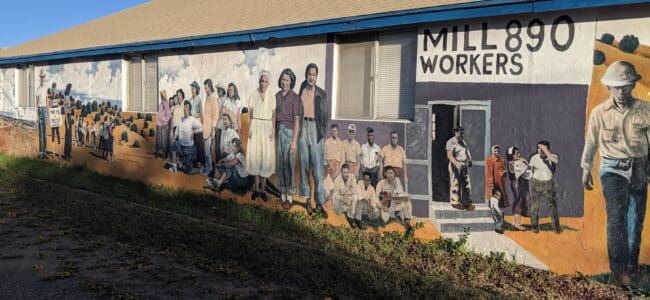
Mural of Empire Zinc Strike by Fred Barraza with Ingalls Leyba and over 20 students from Cobre High School. Photo by Leticia de la Vara.
On October 17, 1950, the local chapter of the International Union of Mine, Mill, and Smelter Workers went on strike. As explained at the Global Nonviolent Action Database:
[They were] demanding an end to discriminatory working conditions and the dual wage system of two-tiered pay, different for Mexican and Mexican American workers as compared to white workers.
The workers picketed the company gates for eight months until June 1951, when the Grant County District issued a court injunction against the picketing under the threat of jail time. In response, as the miners left the picket lines, and their wives took their place, also expanding demands to include better living conditions in the town and the addition of an indoor plumbing system. While the women picketed, the men often took on household duties.
Local police arrested and harassed the women protesters, sometimes jailing children who were out on the lines as well. Instances of violence also occurred. On one occasion, strikebreakers injured three women when attempting to push through the picket line.
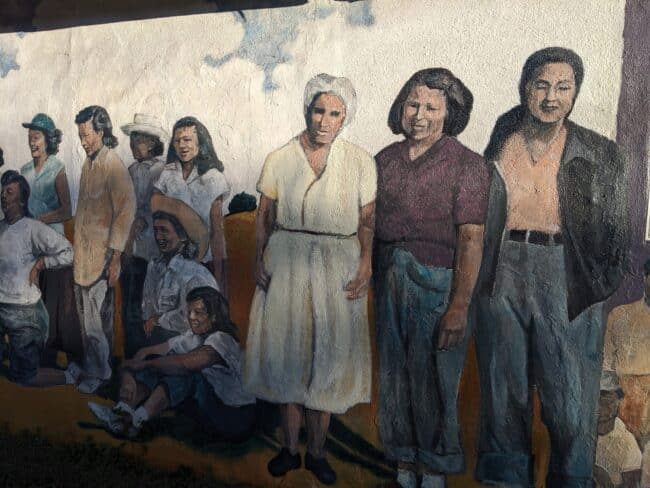
Section of mural of Empire Zinc Strike. Photo by Leticia de la Vara.
After eight months of the strike, the Empire Zinc Company obtained an injunction that prevented the strikers from continuing their picket line. Instead of abandoning the strike, the miners’ wives and children stepped up to maintain the picket line since they were not allowed to work in the mines.
The women and their children upheld the picketing for seven additional months despite frequent mass arrests, violence, and resistance from their husbands who were suddenly in charge of childcare and household tasks. In January of 1952, after 15 months of striking, a new contract was signed to improve the wages and conditions for Mexican and Mexican American workers.
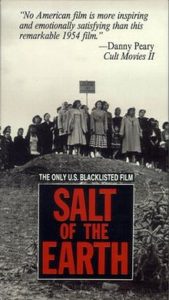 In 1954, Salt of the Earth, a film based on the Empire Zinc Strike was released. It was directed by Herbert Biberman, one of the Hollywood Ten who was targeted for his associations to the Communist party. For a lesson based on the film, check out Salt of the Earth: Grounds Students in Hope, by S. J. Childs for Rethinking Schools. Biberman’s film was blacklisted by the government and only shown in a dozen theatres across the whole country. To learn more about U.S. government censorship during the Red Scare, download the Zinn Education Project’s Subversives: Stories from the Red Scare lesson by Ursula Wolfe-Rocca.
In 1954, Salt of the Earth, a film based on the Empire Zinc Strike was released. It was directed by Herbert Biberman, one of the Hollywood Ten who was targeted for his associations to the Communist party. For a lesson based on the film, check out Salt of the Earth: Grounds Students in Hope, by S. J. Childs for Rethinking Schools. Biberman’s film was blacklisted by the government and only shown in a dozen theatres across the whole country. To learn more about U.S. government censorship during the Red Scare, download the Zinn Education Project’s Subversives: Stories from the Red Scare lesson by Ursula Wolfe-Rocca.
This entry was prepared by Lila Chafe.
Additional Resources
And They Will Inherit It: Story about the strike on Latino USA by Sayre Quevedo.
Salt of the Earth Recovery Project: More testimonies from the strikers and their families, collected by University of New Mexico professor Michelle Kells and her students.
Find more resources below.

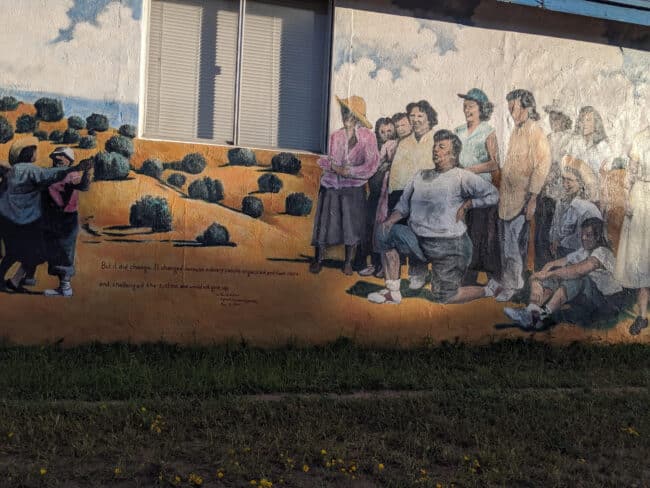
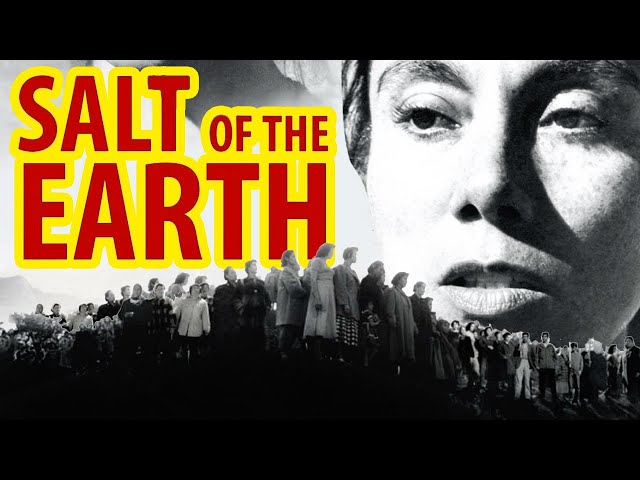

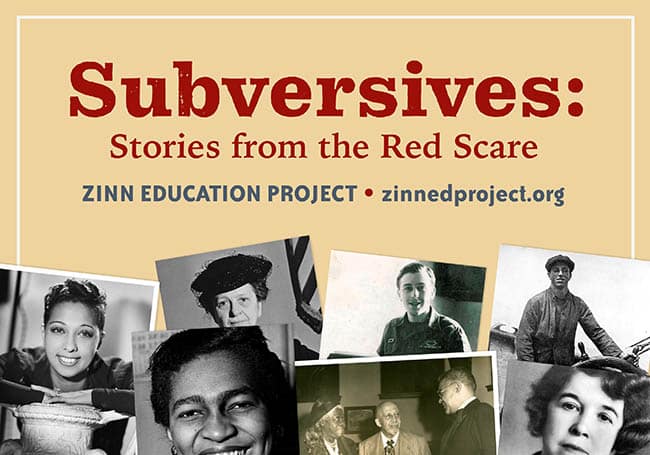
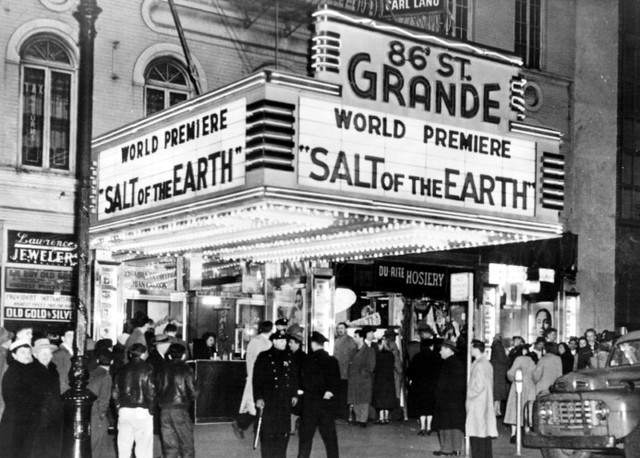





Twitter
Google plus
LinkedIn